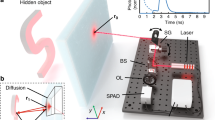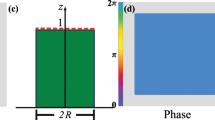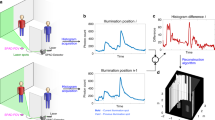Abstract
IN the simplest form of ripple tank demonstration, a ‘point’ source of light placed below the tank is used for casting ‘shadows’ of the ripples on a screen. The ripples have a complicated lens action on the light, so that the relation between the pattern of ripples on the water surface and the pattern of light and shade on the screen is not necessarily a simple one: caution must be exercised in interpreting the finer details of the pattern observed. In more complicated forms of the apparatus, a lens is used above the tank for projecting on to the screen a real image of the ripples; but the same difficulty arises. If the water surface is in sharp focus, the ripples are almost invisible. The lens must be raised so that it focuses the focal lines of light produced by the ripple crests. Now the distance of these focal lines above the surface of the water depends on the curvature of the ripples, and since this varies with the attenuation of the waves, it is impossible for the pattern to be in sharp focus over the screen, while obstacles introduced into the tank to produce reflexion, refraction or diffraction are always out of focus.
This is a preview of subscription content, access via your institution
Access options
Subscribe to this journal
Receive 51 print issues and online access
$199.00 per year
only $3.90 per issue
Buy this article
- Purchase on Springer Link
- Instant access to full article PDF
Prices may be subject to local taxes which are calculated during checkout
Similar content being viewed by others
Author information
Authors and Affiliations
Rights and permissions
About this article
Cite this article
LLOWARCH, W. Application of the Schlieren Technique to the Study of Ripples. Nature 178, 587–588 (1956). https://doi.org/10.1038/178587b0
Issue Date:
DOI: https://doi.org/10.1038/178587b0
Comments
By submitting a comment you agree to abide by our Terms and Community Guidelines. If you find something abusive or that does not comply with our terms or guidelines please flag it as inappropriate.



